This site is part of an affiliate sales network and receives compensation for sending traffic to partner sites, such as CreditCards.com. This compensation may impact how and where links appear on this site. This site does not include all financial companies or all available financial offers.
Cuba is going to be more complicated to travel to with the recent directives.
But should you still want to go, here is another take from Adam, of Adam Smith Photography, who last wrote about Santorini and Cinque Terre, who visited in summer of 2016. Here are his practical travel tips to Cuba.
If you would like to write about your recent travel experiences on The Flight Deal, submit your pitch here.
===
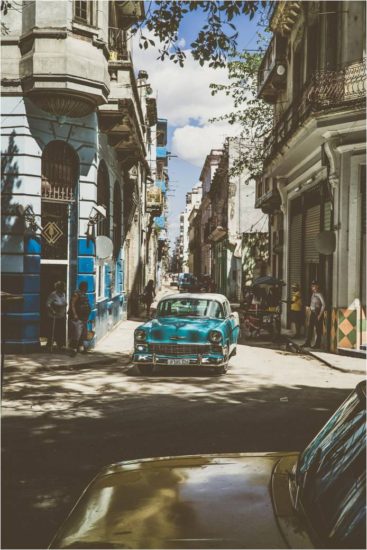
Havana is like a time capsule, with beautiful cars and exquisite architecture around every corner – Photo: (c) Adam Smith
Up until just a couple of years ago, Cuba had been essentially cut off from the USA as a potential travel destination. In fact, it was technically illegal to go there as a tourist. In a way it still is, but the restrictions have finally been loosened with tourism and trade beginning to flood into the small island nation.
Sure, the doors are now open for travel, but the country still remains untouched in many ways, offering a truly authentic cultural experience. There is no real evidence of commercialization or ‘western’ influence per se. There isn’t a Starbucks in sight, no fast food joints polluting the sight lines. Havana holds a pure and authentic feeling. Just 90 miles from mainland USA, Cuba feels like another world trapped in a bubble. It’s so close to Miami that one can almost see it, but Havana feels so far away and foreign. Cuba has a true charm and curiosity that beckons travelers to come and soak in the atmosphere. The paradox of these two different societies so close together is truly fascinating to take in, and just one of the many reasons I recommend visiting Cuba before it gets tainted by commercialization.
Where to stay?
Any traveler with a budget on their mind should immediately avoid most hotels in Havana. They are rather luxurious and the prices reflect that. I’m talking in the hundreds per night (300-400USD). There are some cheaper hotels that take the CUP currency, but foreigners are typically not allowed to stay in these establishments. There are a handful of international hostels scattered throughout Havana, but staying in a private residence is the way to go. Cuba calls these ‘casas particulares’. AirBnB is now running in Cuba and has hundreds of options for a fraction of the cost of a night in one of Havana’s hotels. We paid about $30 a night for a nice room with a private bathroom in a great location. Staying with a local family is also a great way to share culture and experiences, especially if you know a little bit of Spanish.
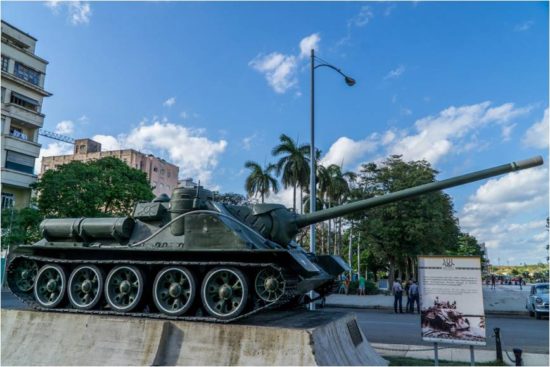
Havana is like a time capsule, with beautiful In front of the Museo de la Revolución – Photo: (c) Adam Smith
What’s worth seeing?
Havana is the type of city that is just a joy to walk through the old streets and take in the sights, culture and sounds of live music. Wandering through Old Havana will lead you to many surprises and some great photos of rundown, yet colorful and rustic old buildings. Most of the main places you’re going to want to see or visit in Havana are in a relatively small geographic area. If you can get a map or have a phone with GPS working, it’s all you need to make your way around. Most of the landmarks and famous bars on the Ernest Hemingway pub crawl are all located in or around Old Havana (more on this later). There are a few places further out (like the Plaza de la revolución) which you may want to consider taking a taxi for; however, in general you can plan on just walking around.
As far as what sights you should see, the cathedral is pretty and free to get into, but for just 1CUC you can climb the bell tower for some great views of the city and bay. Definitely worth it. I also enjoyed visiting the Palacio de los Capitanes y Generales in the Plaza de Armas. Entry was just a few CUC, but the palace was full of history and a neat place to explore for a little while.
The Museo de la revolución is a hub of modern Cuban history with some really interesting items to check out. Pay attention to the walls of the palace as their are numerous places that are peppered with bullet holes from the rebel’s attack on the former president’s palace. The military exhibit that is outdoors and behind the palace is fascinating, and includes some vehicles driven by Castro in the revolution and wreckage of an American spy plane that was shot down. The museum closes around 4pm, so make sure to check it out earlier in the day. It should cost around 6CUC to get in.
The area in and around the Plaza de Armas is a hub of culture and tourism. It’s a beautiful square that is well lit at night as well. The fortress/castle in one corner of the Plaza is just a few bucks to enter, but worth checking out.
On the other side of Havana Bay one can find a couple of fortresses, a huge statue of Christ, and Che Guevara’s house. To get over there, you can take a taxi but for just a few cents, you can grab a ferry (across the street from the huge Russian Orthodox Church and very near to Bar Dos Hermanos). The ferry runs every 20-30 minutes and is an enjoyable way to make the journey to the landmarks on the far side of Havana Bay. Bring enough cash with you, because everything costs money to get into. If you’re on a time or budget constraint, just visit el Morro, which offers incredible views out to the sea and was the spot of some major military operations hundreds of years ago.
Spend at least one evening strolling down El Malecón, Havana’s long stretch of road and pedestrian walkway along the coast, around sunset. Sit on the stone wall and let time go by as the waves crash underneath you. You’ll find tons of locals and tourists alike enjoying the scenery and sounds any day or night.
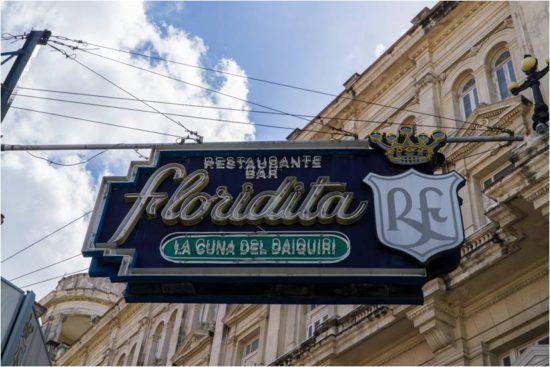
One of Ernest Hemingway’s favorite hangout spots – Photo: (c) Adam Smith
The Bar and Restaurant Scene
Havana is full of incredible pubs and bars that have rich history and fantastic atmospheres. We checked out many of Ernest Hemmingway’s old hangouts like La Floridita or Bodegutio del medio. Sloppy Joe’s, near the Museo de la revolucion, is another cool place that was once frequented by the likes of Frank Sinatra, to grab a bite or drink. Also check out Casa Miglis. It is a stylish restaurant in a very unassuming location, just a couple blocks off the Malecón with reasonable prices.
Ride Around in a Classic
Vintage old cars abound in Havana. The car culture is one of the big draws for many visiting Cuba. Even non car enthusiasts can appreciate how gorgeous some of these vehicles are. Most of the old cars are offered as taxis and you can easily find one to give you a ride. Many of them congregate around Parque Central or the Malecón. Be advised, these guys know their cars are popular and the prices reflect that. You may be able to negotiate, but don’t expect to spend any less than 15-20CUC a ride. Although they’re expensive, it was a fantastic experience riding through the old streets of Havana in a ’51 Chevy convertible. There are certain times when money becomes irrelevant, this is one of them. It’s an experience you just should have. Basically the Cuban equivalent of riding a gondola in Venice.
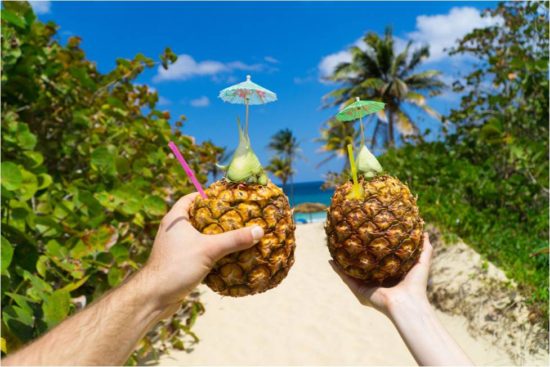
Drinking piña coladas on Playa Santa Maria – Photo: (c) Adam Smith
Beaches
Just outside of Havana lies the playas del este (east beaches). It’s a longish stretch of various beaches within a half hour of downtown Havana. After spending a couple of days in the hustle and bustle of the city, a day on the beach is a glorious alternative. A number of locals and various pages online recommended Playa Santa Maria as the best of crop for nearby beaches, so that’s where decided to go. You can catch a bus for 5CUC round trip from Parque Central. It’s actually a pretty nice and comfy bus and lets you see some of the Cuban countryside on the way to the beach. Santa Maria was the last stop and from where the bus lets you off, it’s a 2 minute trek over a little sand dune to the beach. It’s actually quite a gorgeous view as the palm trees and water come into view. There are some amenities nearby the bus stop if you want to get a snack or a drink. I highly recommend getting a super piña from the drink shack right off the road. It’s a piña colada inside of a fresh pineapple and is, quite literally, one of the coolest drinks you’ll ever have. There’s also a pizza restaurant across the road where you can get a personal size pizza for just a couple of CUC.
A little further down the coastal highway, one can reach the pristine resort towns of Varadero or Jibacoa via taxi or bus if you’re looking for an extended beach getaway. They have all inclusive resorts at pleasantly cheap prices.
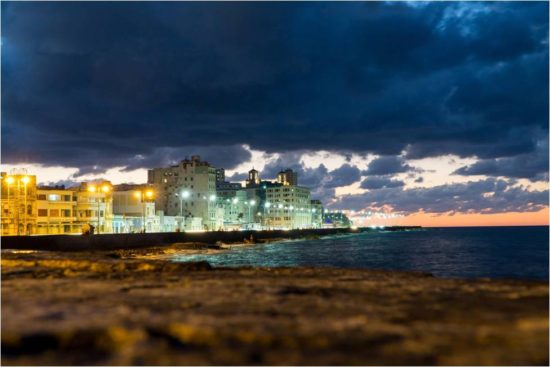
Walking the Malecon at sunset – Photo: (c) Adam Smith
Other Things to Know
The currency situation is an interesting one, and is worth spending some time researching before you land on the island in order to avoid confusion and potential scams. You can read about their dual currency here.
You will also need a visa before arriving in Cuba – these should be purchased before leaving your domestic airport! All travelers, regardless of what country they are coming from need a tourist card, however Americans require a special more expensive version. More info on the tourist cards can be found in this article.
Havana is full of street peddlers who can spot tourists from a mile away. They will be quite aggressive if you give them an ounce of interest. Learn to politely say “no” and just keep on walking. Also, if a group of musicians approaches you and asks if you’d like to hear some music, know that they will expect a tip for their performance. If you tell them “no gracias,” they’ll move on to their next subject.
Speaking of tipping, it is expected and proper to tip for just about everything. Leave a CUC for a drink, about 10% for a meal, and maybe a couple CUC for a taxi ride.
About the Author:
Adam is a curious individual who spent a semester in Spain and came home with a very strong case of an incurable strain of the travel bug. He has become a budget traveling aficionado, always on the lookout for the next great deal, which is nothing more than an excuse to pack his bags again and explore this fascinating planet. Adam spends his non-traveling time working as a case manager, photographer and freelance blogger, and enjoys sports and film. Follow Adam on his site Adam Smith Adventure, his Facebook or Instagram.
=====
To make sure you receive our latest deals, LIKE our The Flight Deal Facebook Page, follow us on Twitter @TheFlightDeal, Threads @TheFlightDeal or The Flight Deal WhatsApp channel or subscribe to The Flight Deal RSS Feed or Subscribe via Email (Once a Day)
The Flight Deal does not sell travel products or services. We provide you with information about third-party travel suppliers’ offers, and link you to their sites. The information posted by The Flight Deal is valid at the time of publication. However, we have no control over the suppliers, and we therefore do not warrant or guarantee that their offers will not change or become unavailable. Nor are we responsible for their products, services or site content. Please see their sites for their most up-to-date offer information and all applicable terms and conditions.
Sign up to receive The Flight Deal Daily DealsLetter, to stay up to date with the latest and greatest flight deals available.

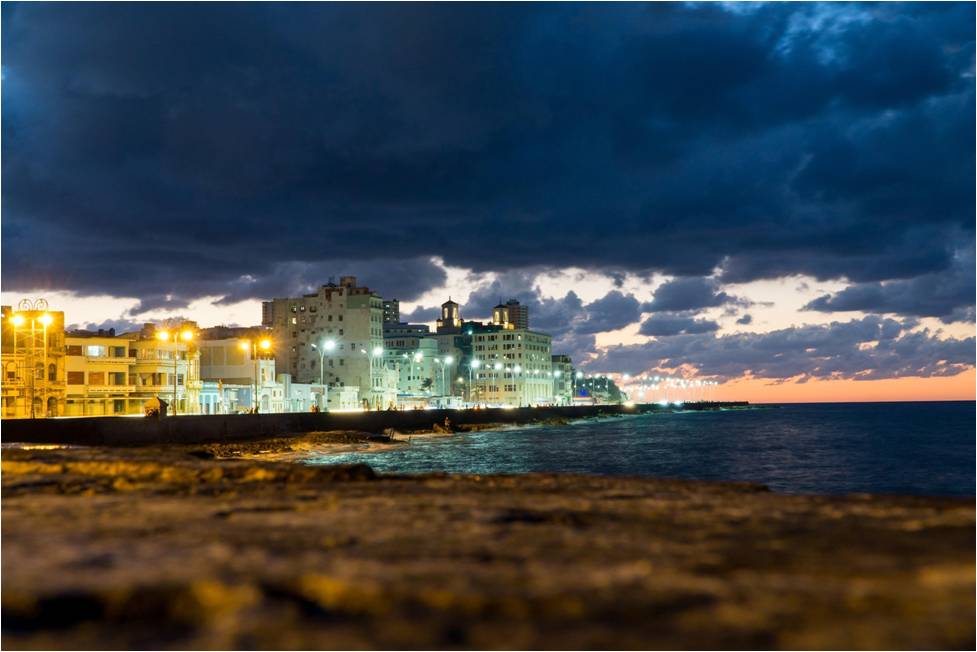
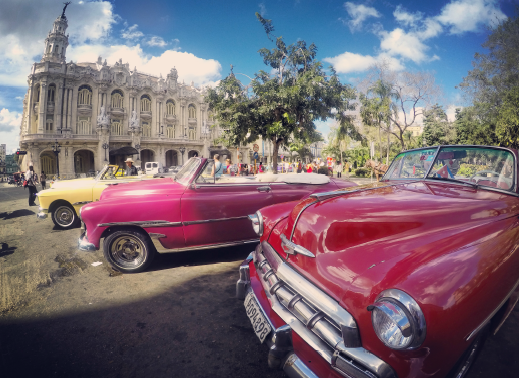
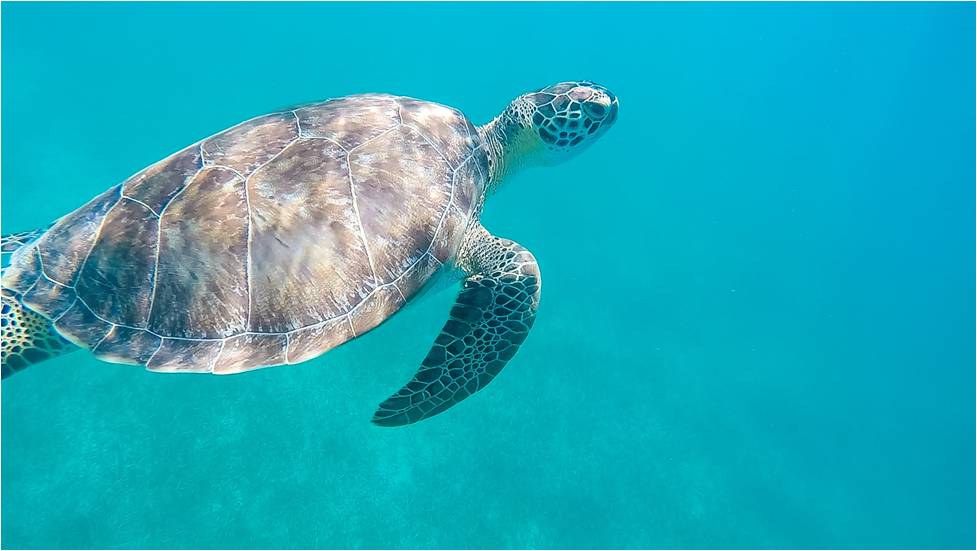
Hi. You realize that Trump made changes to changes to American travel to Cuba on June 16th, right? Individuals can no longer claim the people-to-people license, and will likely need to travel in educational groups as they had to before Obama relaxed the restrictions. (Or go through Mexico/Canada, etc.)
Americans who planned to travel using the people-to-people license and booked a flight or hotel reservation PRIOR to Trump’s announcement can still travel under that category. If you didn’t book anything before June 16th, you’re taking a risk. My understanding is that Americans can still book travel to Cuba after June 16th, but if don’t travel before the new regulations are supposed to be finalized mid-July, or your travel happens after the new regulations and your itinerary doesn’t align with them, then you are probably hosed.
Los Nardos is a delicious amd exquisite, but not very expensive, restaurant near El Capitolio. Perhaps the best meal we had in Cuba.